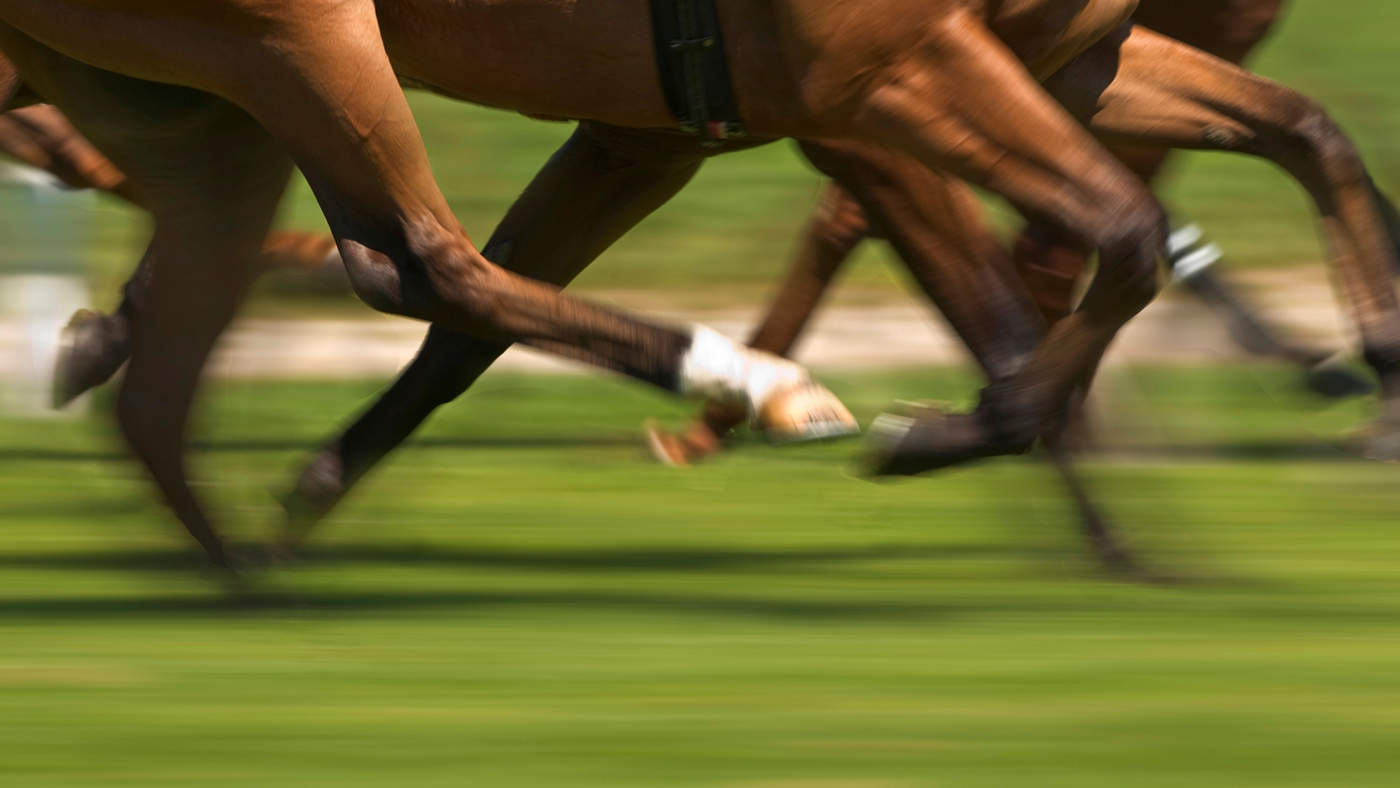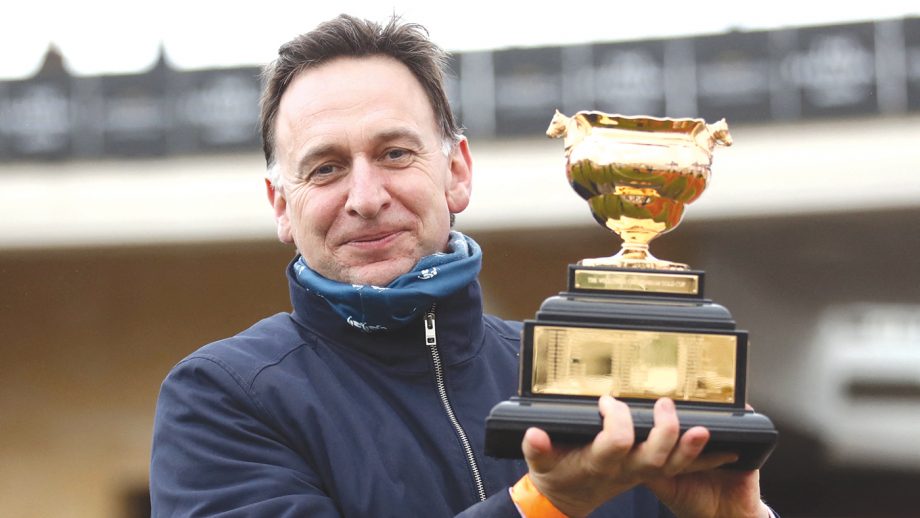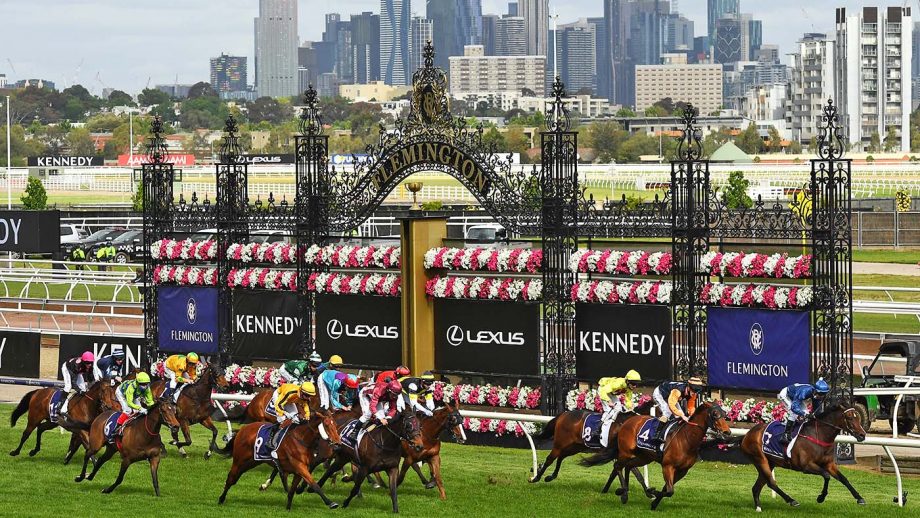The rules also ban any international horse who has ever had a previous major fracture or orthopedic surgery from racing, and limits international Melbourne Cup contenders to one start in Australia prior to the big race. H&H finds out more, and gathers the views of British vets and racing authorities
NEW requirements for horses to undergo extensive body and limb scans ahead of the Melbourne Cup have raised a plethora of questions surrounding the knock-on effects of the stringent new regulations.
Racing Victoria and the Victoria Racing Club announced a raft of new requirements for horses competing in the Spring Racing Carnival, with even more measures for international horses and those competing in the Melbourne Cup.
{"content":"PHA+VGhlc2UgaW5jbHVkZSBhIGZ1bGwgYm9keSBzY2ludGlncmFwaHkgKGJvbmUpIHNjYW4gb2YgaW50ZXJuYXRpb25hbCBob3JzZXMgcGx1cyBDVC9NUkkgbGVnIHNjYW5zIGJlZm9yZSB0cmF2ZWxsaW5nIHRvIEF1c3RyYWxpYSwgcGFpZCBmb3IgYnkgY29ubmVjdGlvbnMsIHBsdXMgZnVydGhlciBDVCBzY2FucyBiZWZvcmUgcmFjaW5nLjwvcD4KPHA+U2NpbnRpZ3JhcGh5IHVzZXMgcmFkaW9hY3RpdmUgdHJhY2VycyB0byBoaWdobGlnaHQgYWJub3JtYWxpdGllcyBvZiB0aGUgc2tlbGV0b24sIHN1Y2ggYXMgaGFpcmxpbmUgZnJhY3R1cmVzLCBhbmQgdGhlIGRvc2UgdXNlZCBpcyBoYXJtbGVzcyB0byB0aGUgaG9yc2XigJlzIGdlbmVyYWwgaGVhbHRoLiBUaGUgaG9yc2UgcmVtYWlucyByYWRpb2FjdGl2ZSBmb3IgYSBzaG9ydCB0aW1lIGFmdGVyd2FyZHMsIHdoaWNoIG1lYW5zIHNwZW5kaW5nIGEgbmlnaHQgb3IgdHdvIGF0IGEgdmV0ZXJpbmFyeSBwcmFjdGljZSBzbyBvdGhlcnMgYXJlIG5vdCBleHBvc2VkIHRvIHJhZGlhdGlvbi48L3A+CjxwPlRoZSBydWxlcyBhbHNvIGJhbiBhbnkgaW50ZXJuYXRpb25hbCBob3JzZSB3aG8gaGFzIGV2ZXIgaGFkIGEgcHJldmlvdXMgbWFqb3IgPGEgaHJlZj0iaHR0cHM6Ly93d3cuaG9yc2VhbmRob3VuZC5jby51ay90YWcvZnJhY3R1cmVzLWFuZC1ib25lLWNoaXBzIj5mcmFjdHVyZTwvYT4gb3Igb3J0aG9wZWRpYyBzdXJnZXJ5IGZyb20gcmFjaW5nLCByZWdhcmRsZXNzIG9mIGN1cnJlbnQgaGVhbHRoIGFuZCBzb3VuZG5lc3MsIGFuZCBsaW1pdHMgaW50ZXJuYXRpb25hbCBNZWxib3VybmUgQ3VwIGNvbnRlbmRlcnMgdG8gb25lIHN0YXJ0IGluIEF1c3RyYWxpYSBwcmlvciB0byB0aGUgYmlnIHJhY2UuIFRoZSByZWd1bGF0aW9ucyBhbHNvIHJlZHVjZSB0aGUgbnVtYmVyIG9mIGludGVybmF0aW9uYWwgaG9yc2VzIGFsbG93ZWQgdG8gdGFrZSBwYXJ0IGF0IHRoZSBTcHJpbmcgQ2Fybml2YWwsIHdoaWxlIGFsbCBNZWxib3VybmUgQ3VwIHJ1bm5lcnMg4oCUIG5hdGlvbmFsIG9yIGludGVybmF0aW9uYWwg4oCUIG11c3QgaGF2ZSBwcmUtcmFjZSBsZWcgQ1Qgc2NhbnMuIEEgcmVjb21tZW5kYXRpb24gc3VnZ2VzdGluZyBhbHRlcmluZyB0aGUgZmlybW5lc3Mgb2YgdGhlIGdvaW5nIGZvciB0aGUgTWVsYm91cm5lIEN1cCB3YXMgbm90IGFwcHJvdmVkLjwvcD4KPHA+PGRpdiBjbGFzcz0iYWQtY29udGFpbmVyIGFkLWNvbnRhaW5lci0tbW9iaWxlIj48ZGl2IGlkPSJwb3N0LWlubGluZS0yIiBjbGFzcz0iaXBjLWFkdmVydCI+PC9kaXY+PC9kaXY+PHNlY3Rpb24gaWQ9ImVtYmVkX2NvZGUtMzEiIGNsYXNzPSJoaWRkZW4tbWQgaGlkZGVuLWxnIHMtY29udGFpbmVyIHN0aWNreS1hbmNob3IgaGlkZS13aWRnZXQtdGl0bGUgd2lkZ2V0X2VtYmVkX2NvZGUgcHJlbWl1bV9pbmxpbmVfMiI+PHNlY3Rpb24gY2xhc3M9InMtY29udGFpbmVyIGxpc3RpbmctLXNpbmdsZSBsaXN0aW5nLS1zaW5nbGUtc2hhcmV0aHJvdWdoIGltYWdlLWFzcGVjdC1sYW5kc2NhcGUgZGVmYXVsdCBzaGFyZXRocm91Z2gtYWQgc2hhcmV0aHJvdWdoLWFkLWhpZGRlbiI+DQogIDxkaXYgY2xhc3M9InMtY29udGFpbmVyX19pbm5lciI+DQogICAgPHVsPg0KICAgICAgPGxpIGlkPSJuYXRpdmUtY29udGVudC1tb2JpbGUiIGNsYXNzPSJsaXN0aW5nLWl0ZW0iPg0KICAgICAgPC9saT4NCiAgICA8L3VsPg0KICA8L2Rpdj4NCjwvc2VjdGlvbj48L3NlY3Rpb24+PC9wPgo8cD7igJxUaGUgcmV2aWV3IHVsdGltYXRlbHkgZm91bmQgdGhhdCBpbmp1cmllcyBpbiBpbnRlcm5hdGlvbmFsIGhvcnNlcywgaW5jbHVkaW5nIGluIHRoZSBNZWxib3VybmUgQ3VwLCByZXN1bHQgZnJvbSBhIHZhcmlldHkgb2YgZmFjdG9ycyBhbmQgdGhhdCBhIGNvbWJpbmF0aW9uIG9mIGNoYW5nZXMgaXMgcmVxdWlyZWQgdG8gcmVkdWNlIHRoZSByaXNrIG9mIGluanVyeSByYXRoZXIgdGhhbiBvbmUgc2luZ2xlIGluaXRpYXRpdmUs4oCdIHNhaWQgUmFjaW5nIFZpY3RvcmlhIGNoYWlybWFuIEJyaWFuIEtydWdlci48L3A+CjxwPuKAnFdlIGtub3cgc29tZSBvZiB0aGVzZSBpbml0aWF0aXZlcyB3aWxsIGJlIG9uZXJvdXMgb24gY29ubmVjdGlvbnMsIGJ1dCB3ZSBtYWtlIG5vIGFwb2xvZ3kgZm9yIG1ha2luZyB0aGUgc2FmZXR5IG9mIGhvcnNlcyBvdXIgcHJpb3JpdHkuIE91ciBzb2xlIGZvY3VzIGlzIG9uIGVuc3VyaW5nIHRoYXQgaG9yc2VzIGFuZCByaWRlcnMgY29tcGV0ZSBzYWZlbHksIGFuZCB3ZSBhcmUgY29tbWl0dGVkIHRvIGRlbGl2ZXJpbmcgdGhlc2UgaW1wb3J0YW50IGVuaGFuY2VtZW50cyBpbiAyMDIxIGFuZCBiZXlvbmQu4oCdPC9wPgo8cD5CdXQgaXQgaGFzIGFsc28gcmFpc2VkIGxhcmdlciwgZXRoaWNhbCBhbmQgc2NpZW50aWZpYyBxdWVzdGlvbnMgb3ZlciB3aGF0IHNvcnQgb2YgcHJlY2VkZW50IHRoaXMgc2V0cyBmb3IgZ2xvYmFsIHJhY2luZyBhbmQgd2hldGhlciB0aGUgcmVjb21tZW5kYXRpb25zIGFyZSB0aGUgc29sdXRpb24uIFRoZXNlIGFyZWFzLCBhbnkgcG9zaXRpdmVzIHBsdXMgdGhlIHBvc3NpYmxlIHVuaW50ZW5kZWQga25vY2stb24gZWZmZWN0cywgYXJlIGxpa2VseSB0byBiZSB3YXRjaGVkIGJ5IHN0YWtlaG9sZGVycyBhY3Jvc3MgdGhlIHdvcmxkLjwvcD4KPGRpdiBjbGFzcz0iYWQtY29udGFpbmVyIGFkLWNvbnRhaW5lci0tbW9iaWxlIj48ZGl2IGlkPSJwb3N0LWlubGluZS0zIiBjbGFzcz0iaXBjLWFkdmVydCI+PC9kaXY+PC9kaXY+CjxwPjxhIGhyZWY9Imh0dHBzOi8vd3d3LmhvcnNlYW5kaG91bmQuY28udWsvdGFnL2JldmEiPkJyaXRpc2ggRXF1aW5lIFZldGVyaW5hcnkgQXNzb2NpYXRpb248L2E+IHByZXNpZGVudCBMdWN5IEdyaWV2ZSB0b2xkIDxlbT5IJmFtcDtIOjwvZW0+IOKAnFRoaXMgbmV3IHJ1bGUgcmFpc2VzIG1hbnkgcXVlc3Rpb25zO8KgIHVuZG91YnRlZGx5IHdlIHNob3VsZCBhbGwgZG8gd2hhdGV2ZXIgd2UgY2FuIHRvIGF2b2lkIGNhdGFzdHJvcGhpYyBpbmp1cmllcyBidXQgaXTigJlzIGltcG9ydGFudCB0aGF0IHRoZSB0b29scyB3ZSB1c2UgYXJlIGFjY3VyYXRlIGFuZCBzcGVjaWZpYyBwcmVkaWN0b3JzLjwvcD4KPHA+4oCcV2hlcmUgd2UgZGVjaWRlIHRvIHN1YmplY3QgdGhlc2UgYW5pbWFscyB0byByb3VuZHMgb2Ygc2VkYXRpb24sIGluamVjdGlvbiB3aXRoIGEgcmFkaW9hY3RpdmUgbWFya2VyIGFuZCBleHBvc3VyZSB0byBpb25pc2luZyByYWRpYXRpb24gd2Ugc2hvdWxkIGFsc28gYmUgc3VyZSB0aGF0IHRoZSBlbmQganVzdGlmaWVzIHRoZSBtZWFucy7igJ08L3A+CjxkaXYgY2xhc3M9ImFkLWNvbnRhaW5lciBhZC1jb250YWluZXItLW1vYmlsZSI+PGRpdiBpZD0icG9zdC1pbmxpbmUtNCIgY2xhc3M9ImlwYy1hZHZlcnQiPjwvZGl2PjwvZGl2Pgo8cD5BIDxhIGhyZWY9Imh0dHBzOi8vd3d3LmhvcnNlYW5kaG91bmQuY28udWsvdGFnL2JyaXRpc2gtaG9yc2VyYWNpbmctYXV0aG9yaXR5Ij5Ccml0aXNoIEhvcnNlcmFjaW5nIEF1dGhvcml0eTwvYT4gc3Bva2VzbWFuIHRvbGQ8ZW0+IEgmYW1wO0g8L2VtPiB0aGUgb3JnYW5pc2F0aW9uIOKAnG5vdGVz4oCdIHRoZSBwdWJsaWNhdGlvbiBvZiB0aGUgcmV2aWV3IGFuZCB0aGUgcmVzdWx0aW5nIHJlY29tbWVuZGF0aW9ucy48L3A+CjxkaXYgY2xhc3M9ImluamVjdGlvbiI+PC9kaXY+CjxwPuKAnFdlIGFyZSBpbiBjb250YWN0IHdpdGggUmFjaW5nIFZpY3RvcmlhIGFuZCB3aWxsIGJlIHNwZWFraW5nIHRvIHRoZW0gdG8gYXNjZXJ0YWluIGZ1cnRoZXIgZGV0YWlscyByZWdhcmRpbmcgdGhpcyBhbm5vdW5jZW1lbnQsIGluIG9yZGVyIHRoYXQgd2UgY2FuIGFzc2lzdCBCcml0aXNoIG93bmVycyBhbmQgdHJhaW5lcnMs4oCdIGhlIHNhaWQuPC9wPgo8ZGl2IGNsYXNzPSJhZC1jb250YWluZXIgYWQtY29udGFpbmVyLS1tb2JpbGUiPjxkaXYgaWQ9InBvc3QtaW5saW5lLTUiIGNsYXNzPSJpcGMtYWR2ZXJ0Ij48L2Rpdj48L2Rpdj4KPHA+4oCcV2hlcmUgYSBob3JzZSBoYXMgYmVlbiByZWZ1c2VkIHRoZSBvcHBvcnR1bml0eSB0byByYWNlIGluIE1lbGJvdXJuZSBhcyBhIHJlc3VsdCBvZiB0aGVzZSBtZWFzdXJlcywgd2Ugd291bGQgc2VlayB0byBlbnN1cmUgdGhlcmUgaXMgYSBwcm9jZXNzIHRvIGFzc2VzcyB0aGF0IGhvcnNlIHVwb24gaXRzIHJldHVybiB0byBCcml0YWluIHNvIHRoYXQgaXTigJlzIHN1aXRhYmlsaXR5IHRvIHJldHVybiB0byByYWNpbmcgc2FmZWx5IGlzIGFwcHJvcHJpYXRlbHkgbWFuYWdlZC7igJ08L3A+CjxwPgo="}
You might also be interested in…
The horse had standing surgery for a micro-fracture of the cannon bone last year and has returned to race all
Library image.
Credit: Alamy Stock Photo
Horses competing in the Melbourne Cup will all be required to have CT scans of their legs prior to running
Stay in touch with all the news in the run-up to and throughout the major shows and events during 2025 and beyond with a Horse & Hound subscription. Subscribe today for all you need to know ahead of these major events, plus online reports on the action as it happens from our expert team of reporters and in-depth analysis in our special commemorative magazines. Have a subscription already? Set up your unlimited website access now
H&H senior news writer
Lucy is an experienced news journalist, reporter and presenter. Since joining the Horse & Hound team in 2015, Lucy has reported from major global sporting events including the Tokyo Paralympic Games and multiple European Championships, as well as Badminton, Burghley and London, to name a few. She has covered current affairs and sports news across the full spectrum of equestrian disciplines and racing, as well as human and equine welfare, industry news and court cases.





